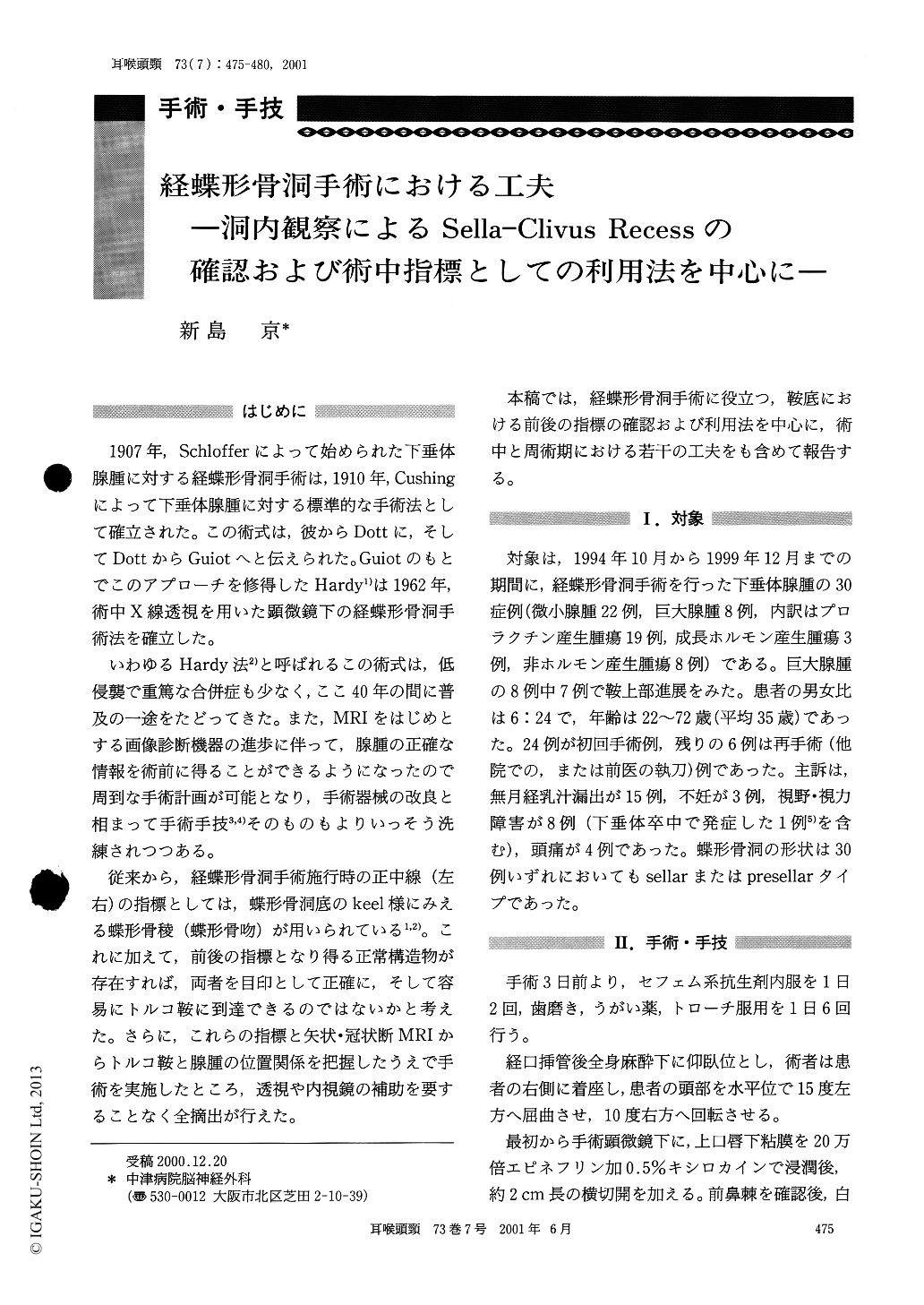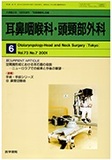Japanese
English
- 有料閲覧
- Abstract 文献概要
- 1ページ目 Look Inside
はじめに
1907年,Schlofferによって始められた下垂体腺腫に対する経蝶形骨洞手術は,1910年,Cushingによって下垂体腺腫に対する標準的な手術法として確立された。この術式は,彼からDottに,そしてDottからGuiotへと伝えられた。Guiotのもとでこのアプローチを修得したHardy1)は1962年,術中X線透視を用いた顕微鏡下の経蝶形骨洞手術法を確立した。
いわゆるHardy法2)と呼ばれるこの術式は,低侵襲で重篤な合併症も少なく,ここ40年の間に普及の一途をたどってきた。また,MRIをはじめとする画像診断機器の進歩に伴って,腺腫の正確な情報を術前に得ることができるようになったので周到な手術計画が可能となり,手術器械の改良と相まって手術手技3,4)そのものもよりいっそう洗練されつつある。
During the transsphenoidal surgery, the crista sphenoidalis (the rostrum sphenoidale) has hitherto been used as a vertical midline landmark. For a more precise orientation to approach the floor of the sella and gain access to the pituitary lesion, itwas thought that thetransitional part of the sellar floor to the clivus, around the cranioposterior edge, as seen from inside the sphenoid sinus, both of which forming a recess (sella-clivus recess) would be of an additional help as a horizontal landmark.
Taken the aforestated thought in consideration and based on both the sagittal and coronal MRIs, the author have extirpated, via transsphenoidal route, pituitary adenomas in 30 cases with success-ful results.
Intraoperative navigation, fluoroscopic or endos-copic assistance was not necessary.

Copyright © 2001, Igaku-Shoin Ltd. All rights reserved.


